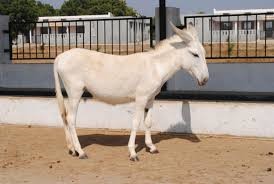The recently released LPR, 2024 report said that significant ‘collective effort’ will be required over the next five years to tackle the dual climate and nature crises.
References
The Nobel Prize, 2024 has been announced recently.
|
Chemistry, 2024 |
David Baker |
For computational design |
|
Demis Hassabis and John M.Jumper |
For protein structure prediction |
|
|
Physics, 2024
|
John J. Hopfield and Geoffrey E. Hinton |
Use of statistical physics concepts in the development of artificial neural networks |
|
Physiology/Medicine, 2024 |
Victor Ambros and Gary Ruvkun |
Discovery of microRNAs |
References
Rwanda recently reported that the Marburg disease infected at least 46 individuals and 12 Marburg deaths.
References
The halari donkeys form close bonds with people, supporting for transport needs with the surviving population of fewer than 500.

Reference
The body of an eight-year-old tiger was found on the border of Amangarh Tiger reserve of Bijnor and Jim Corbett National Park recently.
Reference
Hindustan Times | Tiger found dead in Amangarh Tiger Reserve